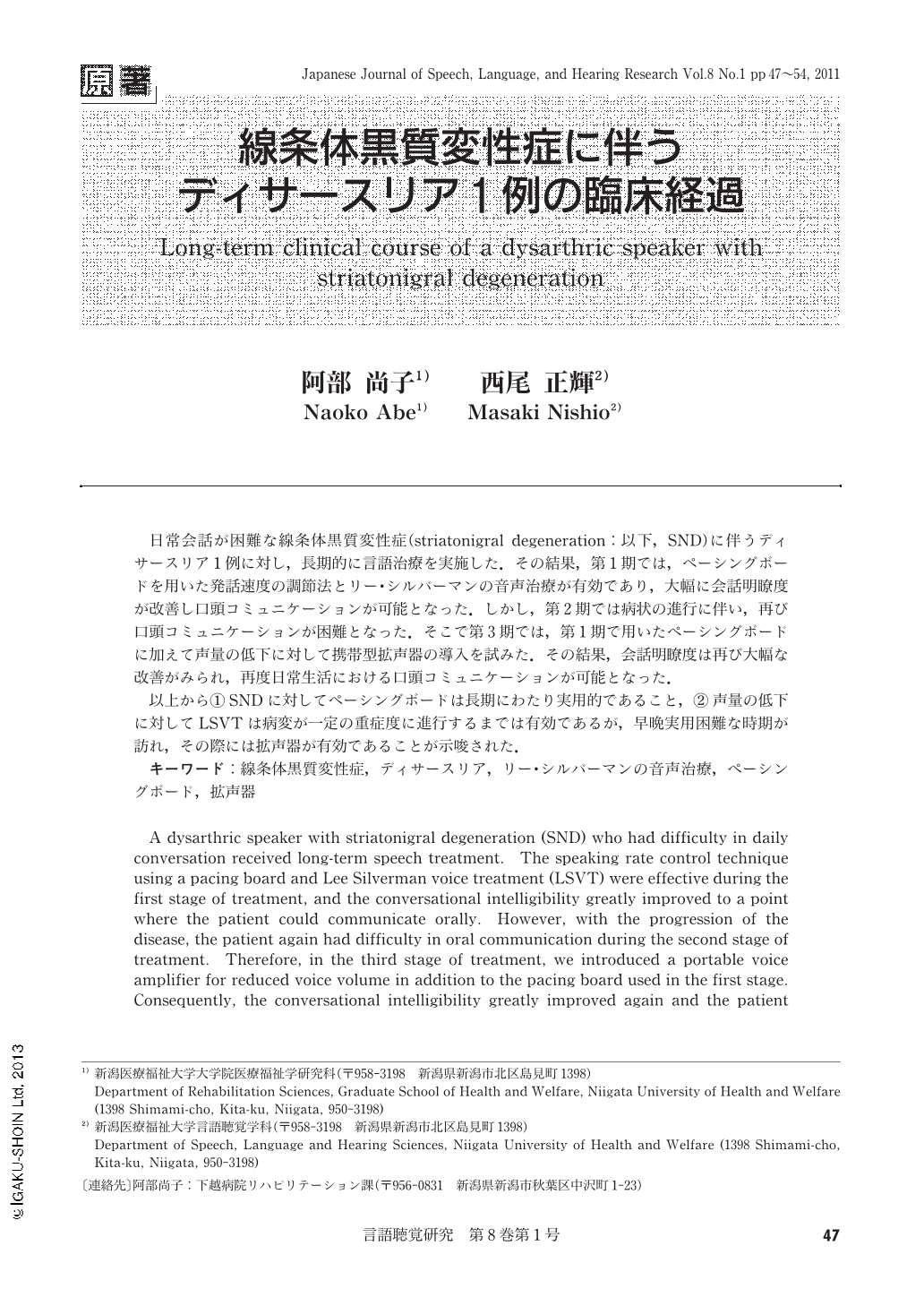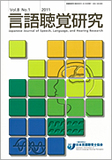Japanese
English
- 有料閲覧
- Abstract 文献概要
- 1ページ目 Look Inside
- 参考文献 Reference
- サイト内被引用 Cited by
日常会話が困難な線条体黒質変性症(striatonigral degeneration:以下,SND)に伴うディサースリア1例に対し,長期的に言語治療を実施した.その結果,第1期では,ペーシングボードを用いた発話速度の調節法とリー・シルバーマンの音声治療が有効であり,大幅に会話明瞭度が改善し口頭コミュニケーションが可能となった.しかし,第2期では病状の進行に伴い,再び口頭コミュニケーションが困難となった.そこで第3期では,第1期で用いたペーシングボードに加えて声量の低下に対して携帯型拡声器の導入を試みた.その結果,会話明瞭度は再び大幅な改善がみられ,再度日常生活における口頭コミュニケーションが可能となった.
以上から①SNDに対してペーシングボードは長期にわたり実用的であること,②声量の低下に対してLSVTは病変が一定の重症度に進行するまでは有効であるが,早晩実用困難な時期が訪れ,その際には拡声器が有効であることが示唆された.
A dysarthric speaker with striatonigral degeneration (SND) who had difficulty in daily conversation received long-term speech treatment. The speaking rate control technique using a pacing board and Lee Silverman voice treatment (LSVT) were effective during the first stage of treatment, and the conversational intelligibility greatly improved to a point where the patient could communicate orally. However, with the progression of the disease, the patient again had difficulty in oral communication during the second stage of treatment. Therefore, in the third stage of treatment, we introduced a portable voice amplifier for reduced voice volume in addition to the pacing board used in the first stage. Consequently, the conversational intelligibility greatly improved again and the patient regained oral communication in daily life.
Considering the above, it was suggested that ① a pacing board is practical for long-term use in patients with SND, and ② while LSVT is effective for reduced voice volume until the lesion progresses to a certain degree of severity, it eventually becomes less practical and a voice amplifier is effective in such a case.

Copyright © 2011, Japanese Association of Speech-Language-Hearing Therapists. All rights reserved.


